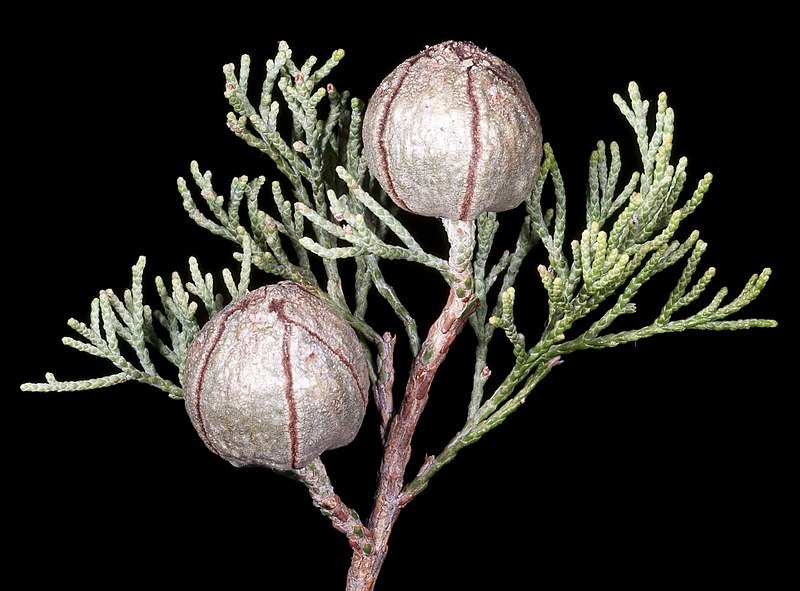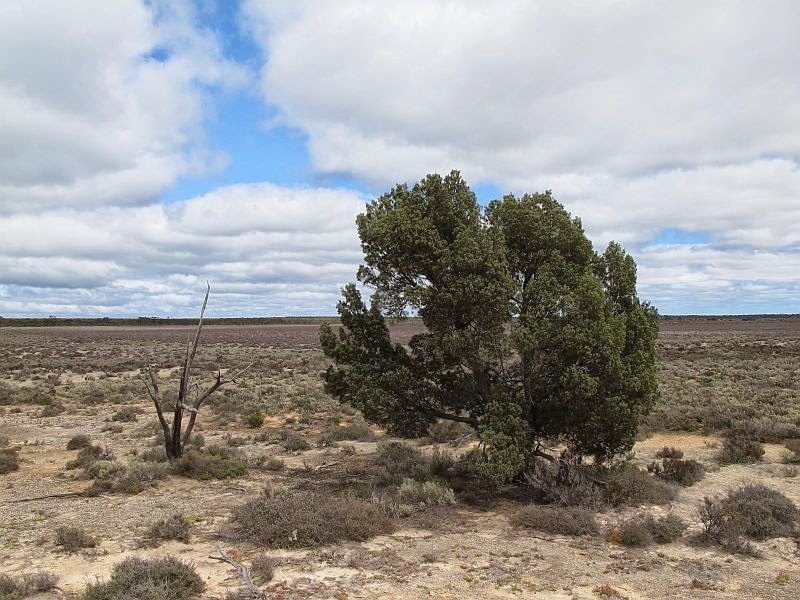Callitris canescens, as described in 1959 by (Parlatore) Stanley Thatcher Blake (1910 - 1973), in Proceedings of the Royal Society of Queensland vol.70, no.39, is commonly known as Morrison's cypress pine, or scrubby cypress pine. The species name comes from the Latin word, canescent, referring to the waxy, green foliage.
Description. Morrison's cypress pine is an evergreen, coniferous species of tree that grows to mature heights of 20 feet (6 m) tall, typically with a short, branching trunk and a pyramidal to irregular crown of ascending, contorted branches.
Distribution. This species is native to Australia - western Australia and south Australia, where one can find it growing at elevations of 820 to 1,250 feet (250 - 380 m) above sea level, on varied soils, in a summer-dry climate. Commonly found in kwongan (dwarf scrubland) with species of Myrtaceae and Proteaceae shrubs, or in mallee scrub with with Acacia, Eucalyptus and other Proteaceae; often on disturbed sites such as rights-of-way.
Horticultural notes. Cold hardy to USDA Zone 10 (30 to 40ºF / 4.4 to -1.1ºC). Thrives in Mediterranean and warmer semi-arid steppe climates.

